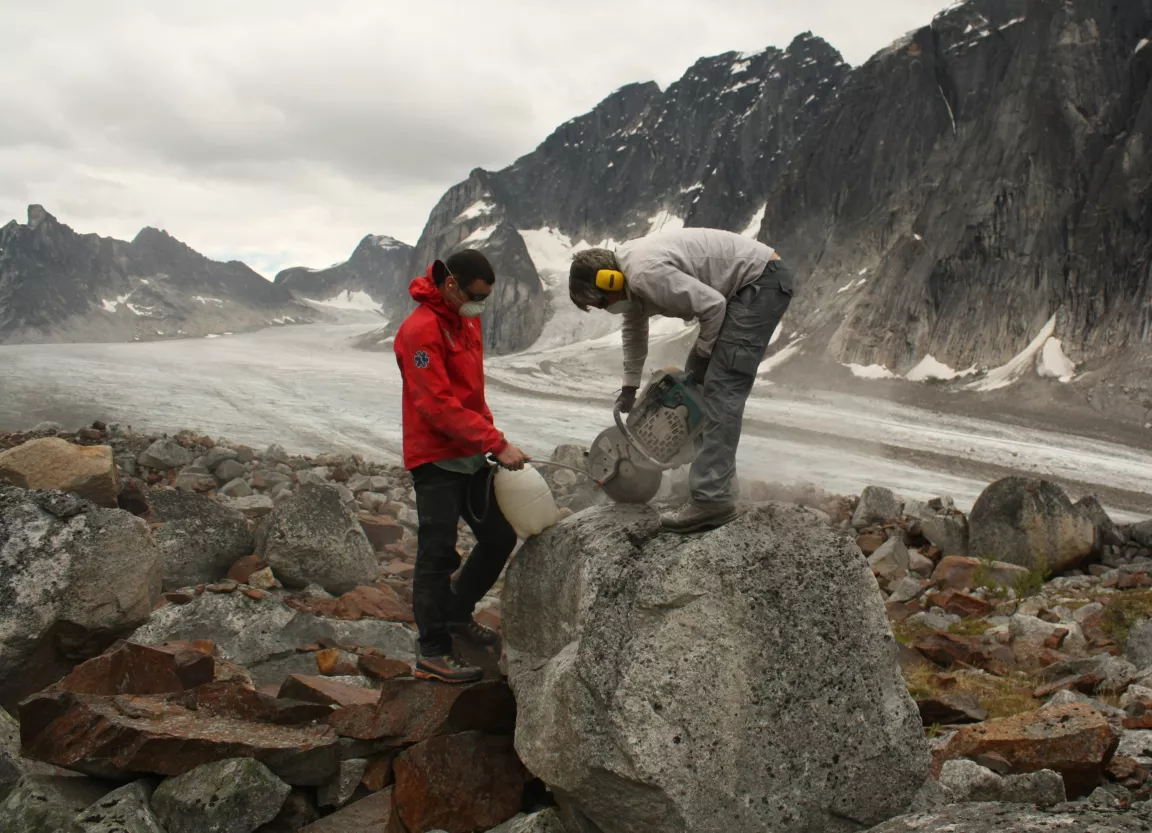Melting Away: Tracking the Demise of a Western Canadian Ice Sheet

The Cordilleran ice sheet, which once covered all of present-day British Columbia, melted sooner than previously thought, according to a research paper led by University of Northern British Columbia Geography Professor Dr. Brian Menounos and published in the journal Science.
Menounos, the Canada Research Chair in Glacier Change, teamed up with 14 co-authors from five countries to produce the paper titled Cordilleran Ice Sheet mass loss preceded climate reversals near the Pleistocene Termination.
Previous researchers had relied on radiocarbon dating to establish when one of North America’s former ice sheet disappeared from the landscape. Radiocarbon dating can be problematic for alpine regions where fossil organic matter is commonly absent. Instead, the researchers used surface exposure dating – a technique that measures the concentration of rare isotopes that accumulate in quartz-bearing rocks exposed to cosmic rays - to determine when rocks first emerged from beneath the ice.
Menounos and his co-authors showed that several alpine areas emerged from beneath the ice sooner than previously recognized. Their work also revealed that decay of the ice sheet was complex, partly due to presence of mountainous terrain, but also because Earth’s climate rapidly switched between cold and warm conditions during the end of the last ice age.
“Our work builds upon a rich history of collaborative research that seeks to understand when and how quickly the Cordilleran ice sheet disappeared from Western Canada,” Menounos says. “Projected sea level rise in a warming climate represents one of the greatest threats to humans living in coastal regions. Our findings are consistent with previous modeling studies that show that abrupt warming can quickly melt ice sheets and cause rapid sea level rise.”
Science, published by the American Association for the Advancement of Science, is one of the world’s top peer-reviewed journals with 400,000 readers each week and more than five million monthly website visits. Menounos is the first UNBC researcher to be the lead author in the journal.
“Our outstanding researchers at UNBC are creating local solutions with global impact and this publication in Science demonstrates the worldwide significance of their work," says UNBC Interim Vice-President Research and Graduate Programs Dr. Geoff Payne. “The discoveries made by Dr. Menounos and his team of international collaborators will advance our understanding of the impact of glacial change."
In addition to covering what is now British Columbia, the Cordilleran ice sheet spanned part of the northwest portion of the United States and Alaska.
The paper presents a more refined timeline for when the ice sheet melted, and arose from fruitful collaboration between Canadian scientists and researchers from the United States, Sweden, Norway and Switzerland.
Their findings will help give researchers a better understanding of when paleo-humans may have migrated from Asia to North America as well as how the melting of the ice sheet transferred large amounts of fresh water into the Pacific and Atlantic Oceans. The findings also provide a model for researchers examining the deglaciation of modern-day ice sheets in Greenland and Antarctica.
The research received funding from the Natural Sciences and Engineering Research Council of Canada and Canada Research Chairs Program.